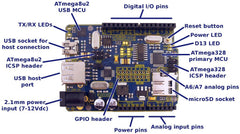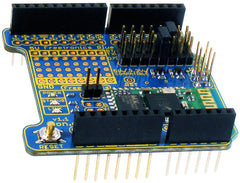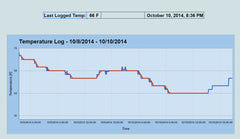Wearable technology is all the rage at the moment, and you can also join in the fun without going to ridiculous levels of expense. One interesting example that has flown under the radar so far is by Instructables member laxap, who demonstrates how to use the Texas Instruments ez430 Chronos watch with an Arduino equipped with a USB host shield.
Included with the watch is a wireless USB dongle which is connected to the USB host shield. With this and the included code your Arduino can receive the three-axis acceleromter and button status data form the watch. With this datayou can then have your Arduino take actions based on the movement of and/or the buttons pressed on the watch. Neat!

For complete details, check out the project's Instructable page. And for more, we're on facebook, Google+, and twitter - so follow us for news and product updates as well.

Apart from being a fully Arduino Uno-compatible, it has onboard microSD socket and the full USB socket and host-mode controller. As well as the Bluetooth application described above, this is the ideal platform for developing peripherals or projects based around Android devices with ADK (Android Developer Kit) functionality, but without requiring a USB host controller shield stacked onto an Arduino. For more information and to order, visit the product page here.























